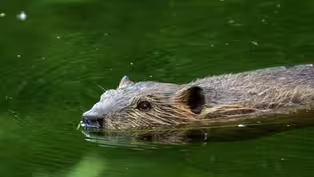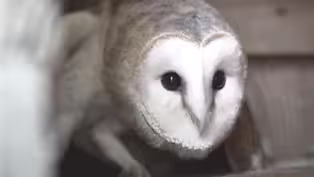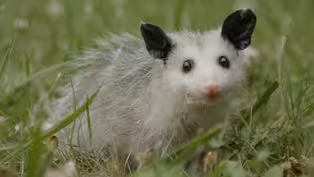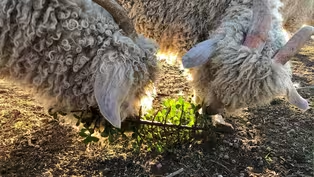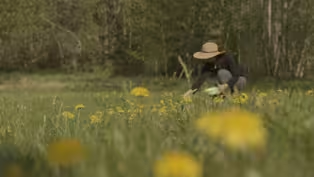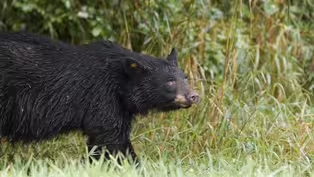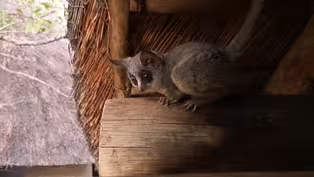
Keep Calm and... Tend to 20,000 Bees | Backyard Nature
Special | 4m 46sVideo has Closed Captions
Immerse yourself in nature with these spring videos.
Studies show that immersing yourself in nature can benefit your health, so watch the videos below to connect with and appreciate nature.
Problems playing video? | Closed Captioning Feedback
Problems playing video? | Closed Captioning Feedback
Major support for NATURE is provided by The Arnhold Family in memory of Henry and Clarisse Arnhold, Sue and Edgar Wachenheim III, The Fairweather Foundation, Charles Rosenblum, Kathy Chiao and...

Keep Calm and... Tend to 20,000 Bees | Backyard Nature
Special | 4m 46sVideo has Closed Captions
Studies show that immersing yourself in nature can benefit your health, so watch the videos below to connect with and appreciate nature.
Problems playing video? | Closed Captioning Feedback
How to Watch Nature
Nature is available to stream on pbs.org and the free PBS App, available on iPhone, Apple TV, Android TV, Android smartphones, Amazon Fire TV, Amazon Fire Tablet, Roku, Samsung Smart TV, and Vizio.
Buy Now
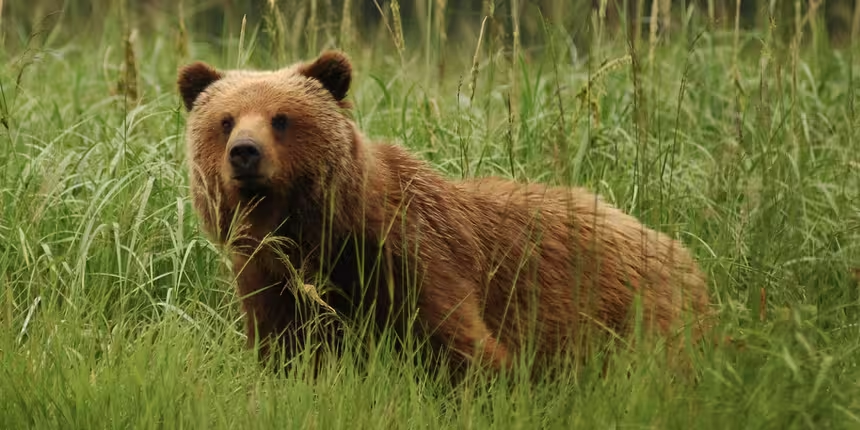
Explore More Ways to Watch
Bring the beauty and wonders of wildlife and natural history into your home with classic NATURE episodes.Providing Support for PBS.org
Learn Moreabout PBS online sponsorshipMore from This Collection
Tag along with filmmakers as they share the beauty of nature while social distancing. Studies show that immersing yourself in nature can benefit your health, so watch the videos below to connect with and appreciate nature.
Busy Beavers | Backyard Nature
Video has Closed Captions
Cinematographer Jeff Hogan takes you into his own backyard to meet his favorite creature. (4m 5s)
The Orphan Owl | Backyard Nature
Video has Closed Captions
Wildlife Filmmaker Ana Salceda made an unlikely companion during the coronavirus pandemic. (8m 12s)
Mythbusting Opossum Facts | Backyard Nature
Video has Closed Captions
Explore the myths and misconceptions surrounding the widely misunderstood opossum. (3m 1s)
The Miracle Plant | Backyard Nature
Video has Closed Captions
This miracle plant helps combat climate change and tastes good in ice cream. (4m 21s)
Video has Closed Captions
Learn how to make dandelion and cat ear tempura with wildlife filmmaker Nim Pontecorvo. (3m 7s)
Caught On Camera | Backyard Nature
Video has Closed Captions
Join wildlife filmmaker Joe Pontecorvo as he views footage from his backyard trail camera. (3m 40s)
Bush Baby Tenants| Backyard Nature
Video has Closed Captions
You think your upstairs neighbors are noisy? You haven't met bush babies. (3m 43s)
Providing Support for PBS.org
Learn Moreabout PBS online sponsorship(bees buzzing) - Hi, I'm Mike Barry, and I live in the suburbs of New York City.
I'm a backyard beekeeper, and I'm taking advantage of the stay-at-home quarantine to spend more time with my honeybees.
Like most of you, my life is filled with the usual stresses and anxieties.
But during this pandemic, I can count on my bees to help me stay calm.
Come join me while I pay a visit to my 20,000 girlfriends.
As I approach my hives, I feel an overwhelming sense of calm descend.
It's a magical feeling, a zen-like atmosphere.
I'm entering another world.
(bees buzzing) It sharpens my concentration and makes me slow my pace way down.
I love it.
Honeybees are fascinating.
Their natural habitat is usually a hollow tree in the forest, but people have been using these wooden boxes to give them a home since around 1850.
You've probably noticed them out in the countryside, but now they are common everywhere, like here in my backyard.
A hive has only one small entrance, where the bees come and go.
They get all their nourishment from going out foraging for nectar and pollen from flowers.
Ultimately, their honey will taste like the flowers they visit.
Before I disturb them, I put in a bit of smoke to calm them down.
Each hive is its own isolated community, and the community mentality is what fascinates me the most.
There are maybe 15,000 bees inside, but people always refer to the hive as a singular entity, like the hive decides when to swarm or the hive decides when to replace the queen.
Inside this box is a very complicated universe.
They don't have a board of directors or elected officials, but from birth, each bee knows their job and performs it for the good of all.
Remember, it's completely dark inside except for the small amount of light that comes in through the entrance, and the bees are able to communicate in intricate ways, mainly by pheromones and smell.
There is one queen and 10,000 to 20,000 worker bees, all female, who do the heavy lifting.
About 10% of the population are male drones, who get a bad wrap because they don't help out with the basic running of the hive.
Hm ... sound familiar?
You put empty frames inside the hives, and the bees make all these hexagonal cells out of wax they excrete.
Again, this is such an unbelievable undertaking if you think about it.
How do they know how to make each cell the perfect size and shape?
These cells are used for everything they need: for nectar, which becomes honey, pollen ... and for the eggs that the queen lays.
It is such an elegant system.
These bees set a good example for me in how to cope with the coronavirus pandemic.
They know what they need to do to survive.
They know they have to rely on one another to benefit the whole, and they exist, like a lot of that natural world, without regard to what is swirling around them.
It's a pretty complicated and intricate system, but at it's essence it is pure and simple.
Did you know that a third of the food we eat needs to be pollinated by honeybees?
You've probably heard that honeybees are not doing well; they are under attack by insecticides, parasites, loss of habitat, and now these Asian murder hornets.
Keeping bees is my small way of contributing to their survival.
It's easy and fun, and it's nothing to be intimidated by.
You can do it almost anywhere, even on urban rooftops.
And the honey tastes even sweeter when you've had a hand in making it.

- Science and Nature

Explore scientific discoveries on television's most acclaimed science documentary series.













Support for PBS provided by:
Major support for NATURE is provided by The Arnhold Family in memory of Henry and Clarisse Arnhold, Sue and Edgar Wachenheim III, The Fairweather Foundation, Charles Rosenblum, Kathy Chiao and...
